While birding on Cape Sable, CSI on Sept-16th 2015, Ronnie d’Entremont and I were photographing shorebirds when I saw a very rusty looking Dunlin (Calidris alpina) type. The bird was amongst a mix of roosting Semipalmated (Calidris pusilla) and Least Sandpipers (Calidris minutilla), nearby were several White-rumped Sandpipers (Calidris fuscicollis). The Dunlin was in a plumage unfamiliar to me and I thought it perhaps a juvenile, based on a quick reference to the Sibley app at the time, a Dunlin plumage rarely seen away from the breeding grounds, apparently.
A few photos of the bird were taken, but they were just part of a larger batch of shorebirds and not critically re-examined during processing. After posting the photos on my blog, Ontario birder Alan Wormington left a comment suggesting that the bird was in fact likely to be a hybrid between Dunlin and White-rumped Sandpiper. You will see from the reference list that Alan has experience of this hybrid combination.
I immediately looked at the photos again but with a more critical eye. It was clear that the bird was in worn plumage with noticeable bleaching of the coverts and some worn scapulars, not something that should be associated with a juvenile Dunlin and more indicative of our bird being an adult. A web trawl revealed further instances of presumed hybridisation between Dunlin and White-rumped Sandpiper and so I thought it worth writing up the Cape Sable bird and inviting comments.
Hybridisation amongst calidrids
There is some recorded history of calidrid hybridisation. During research I made reference to three mainstream sources: The Shorebird Guide, O’Brien M, Crossley R and Karlson K. (Houghton Mifflin, 2006); Shorebirds of North America, The Photographic Guide, Paulson D. (Princeton, 2005); Shorebirds of North America, Europe and Asia, a Photographic Guide, Chandler R. (Princeton, 2009).
I also read the available notes on Dunlin x White-rumped Sandpipers as listed in the references at the end.
Dunlin as a starting point
Dunlin is a familiar shorebird to birders in North America and our subspecies in eastern North America is C. a. hudsonia. The presence of C. a. arctica might also be expected to occur in the east although it would be classed as a rare vagrant. In the west, the subspecies C. a. pacifica is to be expected and is suggested to be sufficiently morphologically different as to be readily identifiable in the field. In Nova Scotia, Dunlin are scarce in spring but common as a migrant in autumn and, around Cape Sable Island at least, some winter in small numbers in most years (McLaren, 2011).
Breeding ranges of Dunlin races
- Calidris a. arctica, northeast Greenland.
- C. a. schinzii, southeast Greenland, Iceland, the British Isles, Scandinavia & the Baltic.
- C. a. alpina, northern Europe and northwest Siberia.
- C. a. centralis, north-central and northeast Siberia.
- C. a. sakhalina, eastern Russia to the Chukchi Peninsula.
- C. a. kistchinski, around the Sea of Okhotsk to Kuril Islands and Kamchatka.
- C. a. actites, breeds on Sakhalin.
- C. a. arcticola, breeds from northwest Alaska to northwest Canada.
- C. a. pacifica, breeds in western and southern Alaska.
- C. a. hudsonia, breeds in central Canada.
Below is a map showing the distribution in N. America of Dunlin, followed by a map of the breeding range of White-rumped Sandpiper, both maps reproduced with the kind permission of Terry Sohl.
One of the Dunlin races, C. a. hudsonia, shares a breeding range with White-rumped Sandpiper, both species occupying the same wet tundra habitat and therefore presumably competing at some level for the same summer territories.
Dunlin of the subspecies C. a. hudsonia/pacifica in juvenile plumage are illustrated in field guides as very rusty in appearance and are described in Chandler as having a ‘rather rufous-toned head and breast with a brownish crown. Upperparts darkish brown with rusty-fringes, often with a pale mantle-V; breast and belly strongly streaked or spotted, remainder of underparts white’. He adds that only the European races migrate south in juvenile plumage, ours and other races have a body moult on or near their breeding grounds.
This information is generally reproduced across field guides and accords with my thinking that our rusty bird was in a juvenile plumage. In the field, had I paid critical attention to the coverts and noticed that wear there would not be a feature of a juvenile, I might have concentrated more on getting better photo documentation, including waiting for wing flexing and trying to better document back and rump pattern.
To establish a Dunlin baseline image, here are a selection of photos, some from the same period and location:
This adult (possibly 1st summer) Dunlin taken September-1st is in moult but still retains the black belly and many abraded feathers of summer plumage. Once the moult is complete it will look like this:
Here is another example of Dunlin in winter plumage, taken October-31st elsewhere.
The image below is of a moulting adult Dunlin, take on the same day that the hybrid was observed:
The pictorial reference below, taken on Cape Sable on September-1st 2015 shows another Dunlin, this one is a typical juvenile. Note the pale edged scapulars in moult to winter grey; pale edged juvenile scapulars are a typical trait shared by many juvenile shorebirds. A month later this bird should look quite different.
Having established what a Dunlin looks like in adult summer, winter and late-juvenile plumage, here is the putative hybrid. Of the images taken, these are the best. You can see straight away that the coverts are adult and in moult. The scapulars are still clean and fairly fresh looking. They have elements of White-rumped Sandpiper about their shape but also, and I’m not seriously suggesting an alternative candidate, of breeding Rock Sandpiper.
The overall impression of the bird is Dunlin-esc, but it lacks the sad expression. The breast, belly (as much as can be seen) and the flank markings are very well-defined. The overall colouration is too rufous, the bill is possibly too short and seems overly robust for Dunlin. The supercilium would appear to be too well-defined for Dunlin, more akin to that of an adult White-rumped Sandpiper in breeding plumage, and this is perhaps one of the major clues regarding parentage.
This second image of the putative Dunlin x White-rumped Sandpiper hybrid offers a slightly more angled view and reiterates the points already made especially the supercilium and general head pattern. The belly and flank barring is also better illustrated offering a further, strong indicator of lineage. Divining the parentage of any hybrid is a case of looking for clues that fit one or both of the suppliers of genetic material. That there are similarities to Dunlin is unquestionable but what about White-rumped Sandpiper traits?
Below is a shot of a White-rumped Sandpiper from the same location and date. This is a moulting adult, as shown by the wear to the wing coverts and vestiges of summer plumage. It might be regarded as lightly marked but the head structure, if not colouration, is interesting.
Below is a further image of another adult White-rumped Sandpiper at the same location (front bird), taken on September-1st 2015. This bird shows better defined flank markings than the previous bird, it also shows similarities with the putative hybrid calidris.
Below is another moulting adult White-rumped Sandpiper, taken in Quebec, September-5th 2009. This bird shows a different posture again, having the attenuated look we expect of White-rumped Sandpiper.
The image that really confirms the hybrid’s lineage is found in The Shorebird Guide, page 163, plate 6. This bird could almost be our hybrid except for the bill (too short) and perhaps the primary projection. The next best is the sleeping bird below (centre). Many thanks to Rick Whitman for his permission to reproduce the photo here.
More visual reference
Below is a sequence of head shots of Dunlin, including the Cape Sable putative hybrid (bottom bird) and a White-rumped Sandpiper, (middle right). The bird believed to be C. a. pacifica is centre. Note the very different facial expression of pacifica, do winter birds have the same features? If so, that feature alone would allow relatively easy field separation.
The following three images are all of C. a. schinzii and are included here to give a further example of Dunlin plumage and structure variation. There are aspects of schinzii head structure and plumage that compare favourably with the hybrid’s and, while unlikely based on range, there is no conclusive reason not to consider that schinzii may be involved. I am greatly indebted to my friend Iain H. Leach for permission to use the images, see more at his web site at: http://www.iainleachphotography.com/
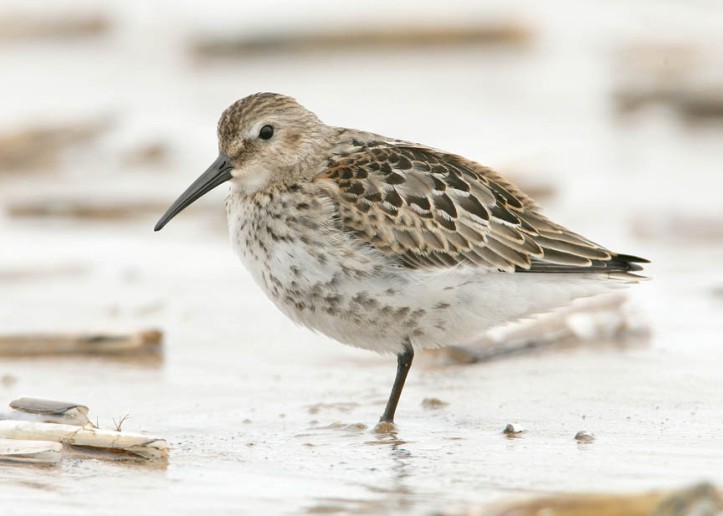
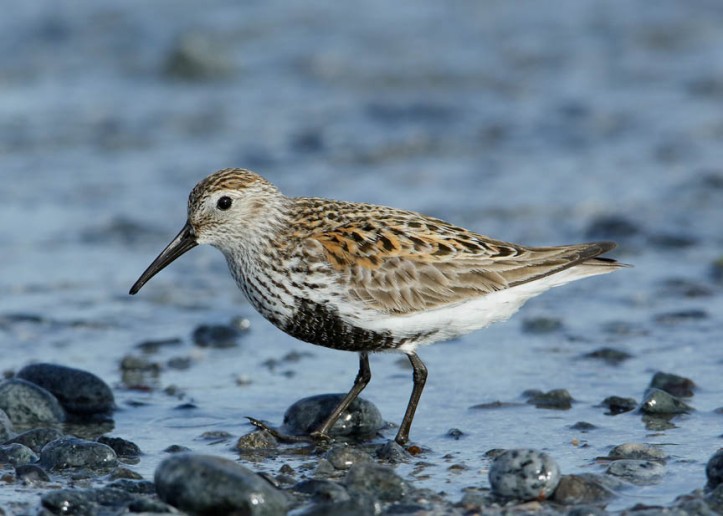

Conclusions
Although the photo of the hybrid is limited in that certain aspects of the bird cannot be seen clearly, the essence of the individual is Dunlin, race uncertain, however, the following features are wrong for Dunlin:
The bill is rather deep based, similar structurally to White-rumped Sandpiper.
The overall colour is too extensive on the head for Dunlin but very similar to a June (breeding plumage) White-rumped Sandpiper.
The supercilium is too extensive for Dunlin, again recalling White-rumped Sandpiper in the full flush of summer plumage.
The eye is in the wrong place and the head shape not oval as in Dunlin.
The breast/flank markings are rather bold and extensive, they match a spring adult White-rumped Sandpiper.
To my eyes, the hybrid lacks the ‘sad’ expression of a Dunlin.
The scapular pattern is more suggestive of White-rumped Sandpiper than Dunlin.
The closed wing appears to project beyond the tail more than it would on Dunlin, but less than it would on White-rumped Sandpiper.
The evidence, in my opinion, indicates that this bird is a hybrid showing predominantly Dunlin structure but White-rumped Sandpiper in plumage.
That two distinct species break the biological rules and create hybrids is both interesting and confusing, not least when you are presented with an example in the field. Thankfully, we can rely on our digital friends to furnish us with the requisite images which we can then forensically dissect. If hybridisation is more widespread than we understand, will it be more readily found thanks to digital photography? Have we got our own, eastern North American, Cox’s Sandpiper?
And finally, just to continue on a hybrid shorebird theme, a sort through my own Dunlin reference photos included this doc-shot of an individual at Baie du Febvre, Quebec, in September 2013. It was present while a Sharp-tailed Sandpiper enthralled us and so got completely ignored. To me this bird has the characteristics of a Pectoral Sandpiper x White-rumped Sandpiper although that bill is very straight. Comments are welcome.
Links and further reading
Photos of a hybrid Calidris in Florida.
http://www.oceanwanderers.com/WayneRichardson.Sandpiper.html
A strikingly similar bird to ours from Massachusetts.
Two photos of an apparent Dunlin x White-rumped Sandpiper.
http://www.marylandbiodiversity.com/viewSpecies.php?species=16267
Photo of a hybrid Calidris from New York State.
http://birdingdude.blogspot.ca/2013/07/western-sandpiper-search-leads-to.html
References not available on-line
McLaughlin K. A. and Wormington A. (2000) An Apparent Dunlin x White-rumped Sandpiper Hybrid. Ontario Birds 18(1):8-12
Browning, M. Ralph. (1977). Geographic Variation in Dunlins, Calidris alpina, of North America. Canadian Field-Naturalist 91(4): 391-393.
Greenwood, Julian G. (1986). Geographical Variation and Taxonomy of the Dunlin Calidris alpina. Bulletin of the British Ornithologists Club 106 (2): 43-56.
Other references:
McLaren, I. All the Birds of Nova Scotia – Status and Critical Identification, Gaspereau Press with the Nova Scotia Bird Society, 2012.
O’Brien, M., Crossley, R. and Karlson, K. The Shorebird Guide, Houghton Mifflin, 2006.
Paulson D. Shorebirds of North America – The Photographic Guide, Princeton, 2005.
Chandler R. Shorebirds of North America, Europe and Asia – a Photographic Guide, Princeton, 2009.
Hayman P., Marchant J. and Prater T. Shorebirds – An Identification Guide to the Waders of the World, Helm, 1986.
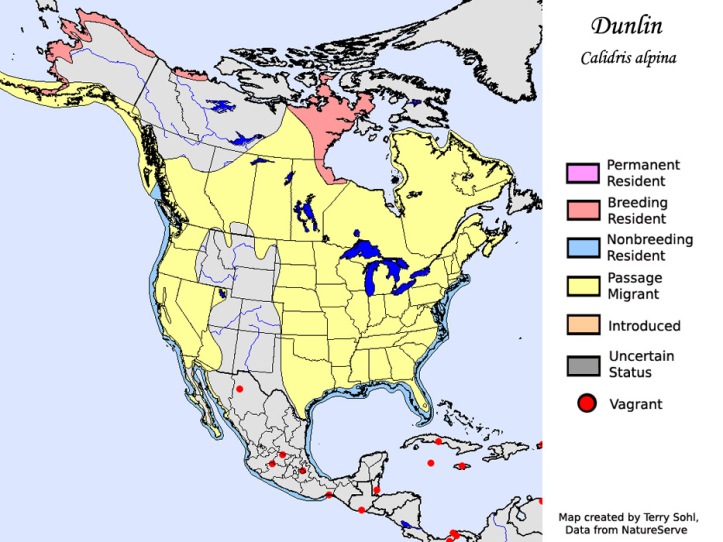
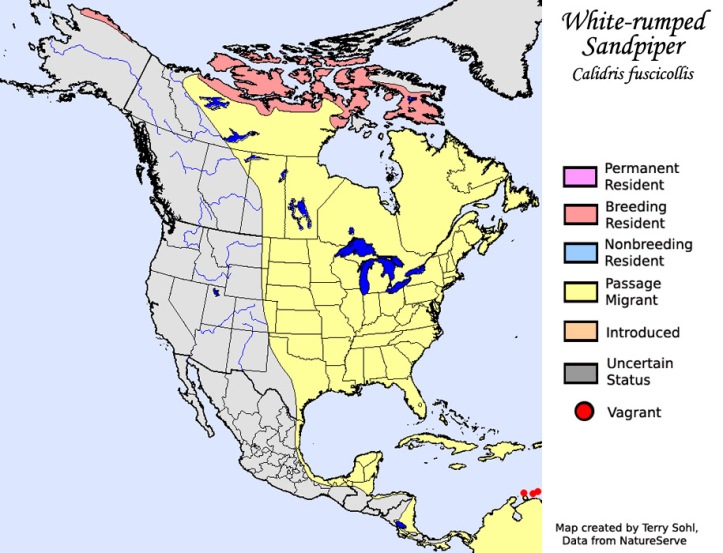

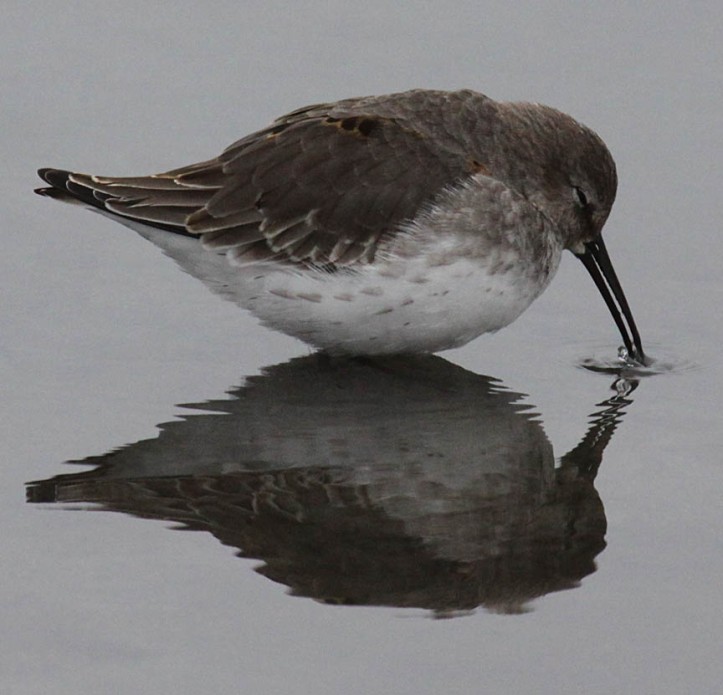
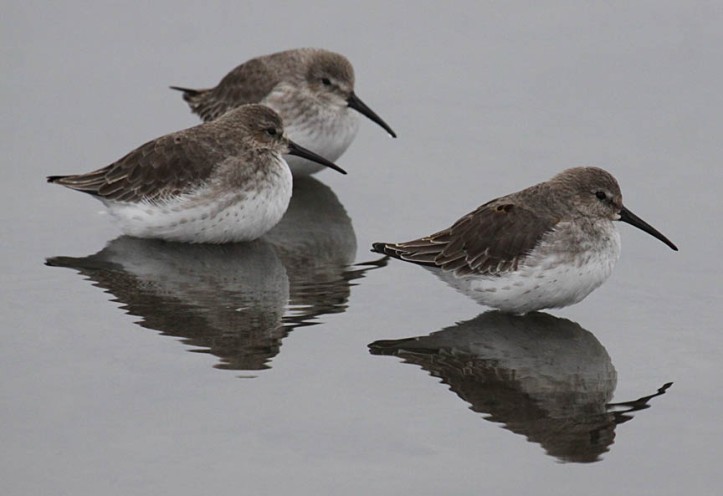
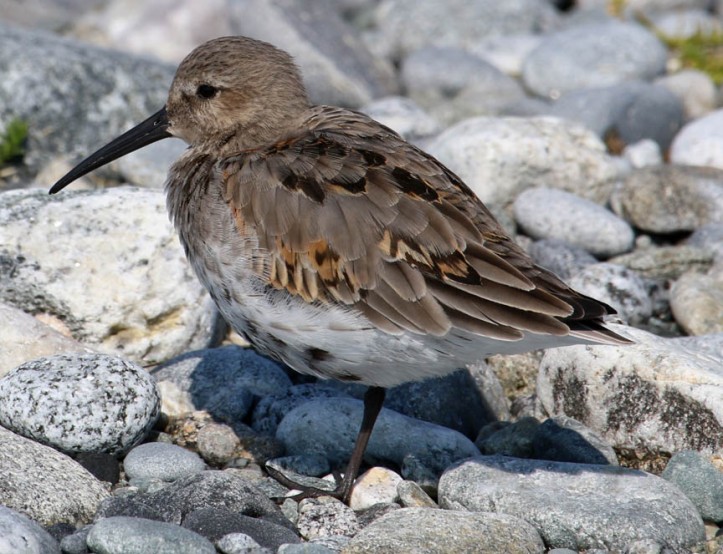
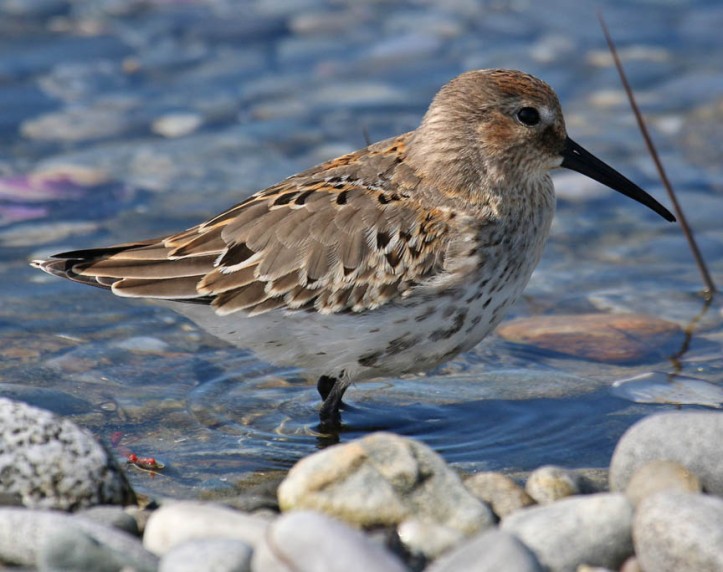

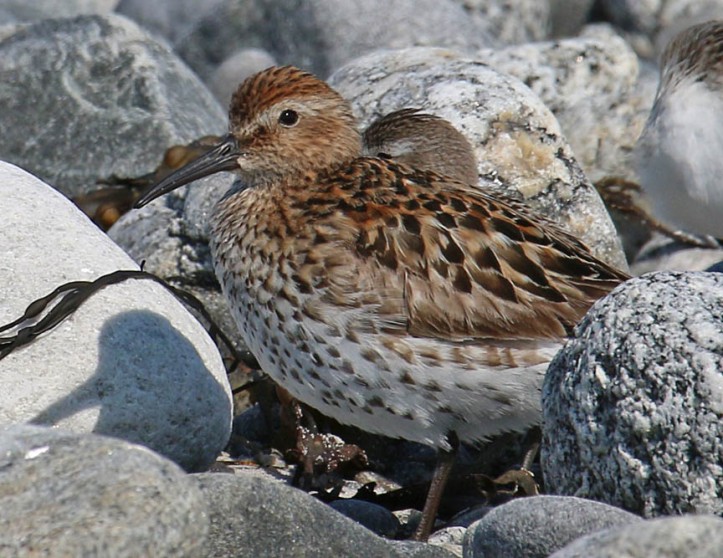
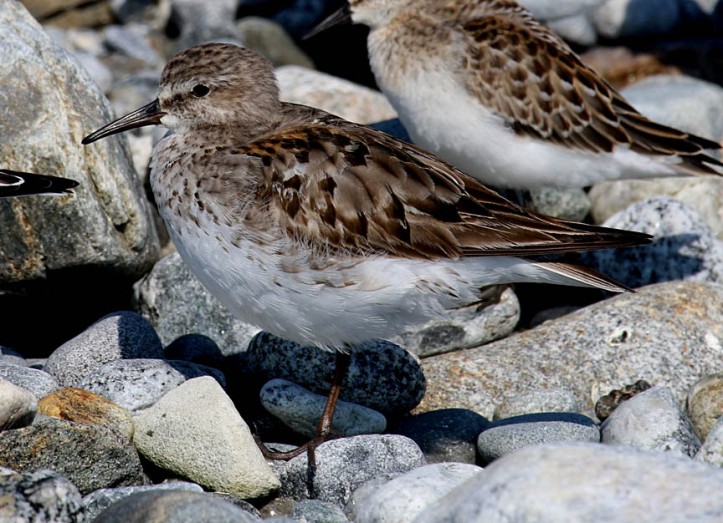
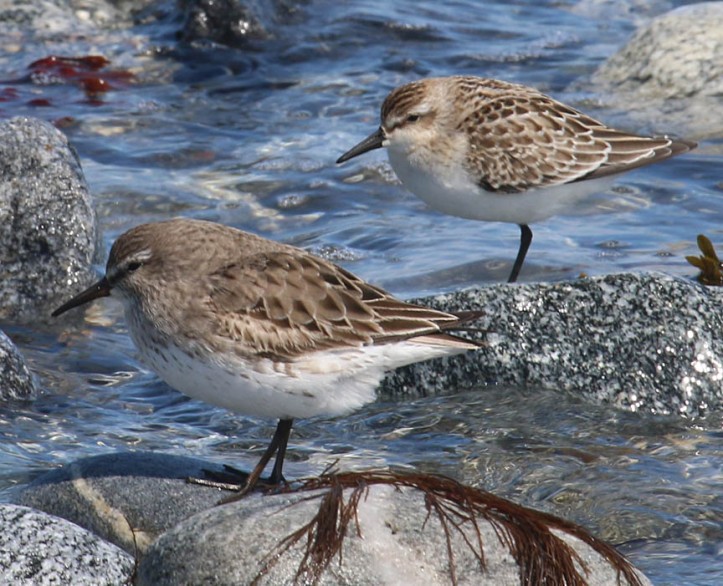

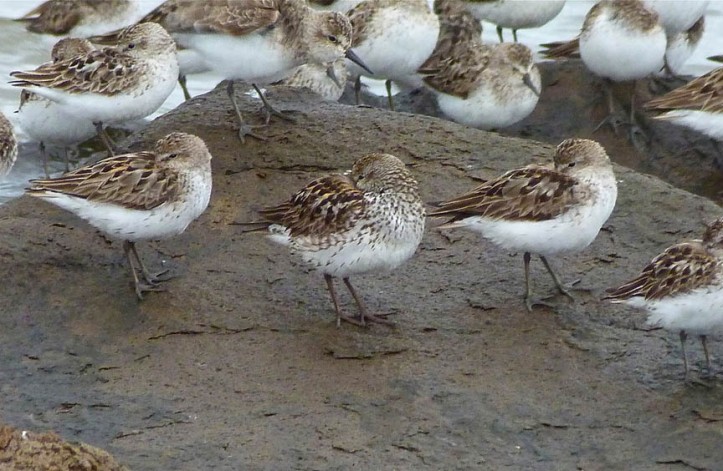


Very interesting bird and what a lot of great analysis. I agree it looks exactly like the bird in Massachusetts.
LikeLike